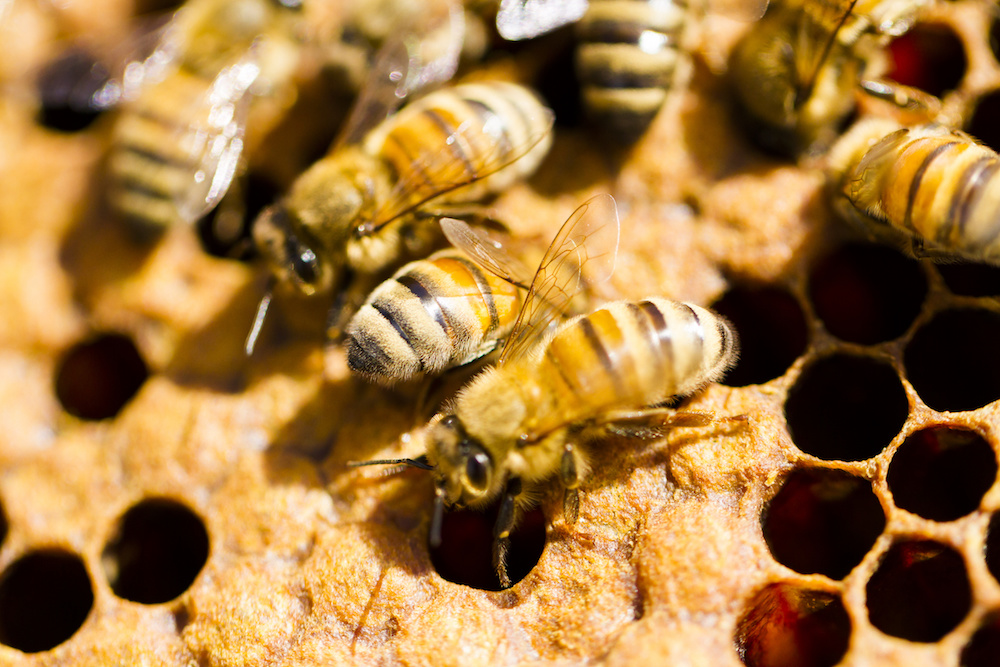The average person lives 78 years, according to the National Center for Health Statistics. Compare that to the significantly shorter life spans of bees, and it is even more amazing how much they contribute to pollination and the environment! There are more than 20,000 bee species in the world, and without digging deeper into all of them, recognizing the life spans of some of the most common bees in our nation can help build an appreciation for their value and why they should be treated with respect and care, even when they need to be moved.
The Role Matters
Bee biology is complex, and the life span of different bees within the same species and hive depends on the role and purpose for their existence. Worker bees don’t live as long as queen bees. Queen bees are responsible for laying every single egg in their colony, and she is catered to and protected at all costs. Every bee’s life cycle depends on the environment and several other factors.
Social Bees
Of all special bees, the honeybee is the most well-known and the species most beekeepers choose to keep. The honey is a benefit of keeping these bees, but there is so much known about them; it is an easier species to keep, and it doesn’t take much to get started.
Honeybees
Honeybee hives have workers, drones, and a queen. The queen is at the center and can live up to 5 years. She eats only the best royal jelly and is watched over. She is only responsible for laying eggs and ensuring the survival of her hive. The queen does not perform any other tasks and does not leave the hive, except to mate in flight. The queen remains in the hive, which prevents her from being exposed to environmental factors that drones and workers may deal with daily. Worker bees are female and will live as long as they are needed. Bees adapt to the conditions outside the hive, and they need to live longer in winter to ensure the hive has all it requires to make it to warmer weather. In the summer, worker bees only live 1-2 months. Continual flying, foraging, collecting, and returning to the hive exposes them to threats, which is why they have shorter life spans. In the winter and colder months, because bees do not expend as much energy, they can live up to six months. The hive must remain warm, and their body movement and wing activity help regulate the temperature for the queen and eggs. Drones have the shortest life span in the honeybee colony because they are meant to mate with the queen. And if they don’t die, they will be sent away from the hive in the winter to conserve resources.
Bumblebees
Bumblebees are another social species of bees common in the nation. However, these colonies are seasonal, and a queen, after mating, will go into solitude for winter and start a new colony each spring. The Bumblebee queen lives approximately one year, including her winter hibernation. Worker bumblebees live about a month as they continually forage, which shortens their life spans. Male bumblebees are lucky to make it to the two-week mark.
Solitary Bees
Most bee species are solitary, and their life cycles are slightly different. The entire life cycle of a solitary bee is approximately one year, and this includes eggs to larvae, to adults. Adult solitary bees do not have long life spans, and last between 1- 2 months. During the short time they are alive, they build nests, often in the ground< lay eggs, and forage for nectar and pollen. Males only mate and have a significantly shorter life span than female bees.

Get help with your beehive or bee swarm removal! Call Today 760-224-3040 Or 951-265-8292!
What Influences Bee Life Spans
Many factors play into the life span of different bee species. Even the same species may have varying life spans depending on environmental factors. Temperatures, weather, and climate all impact the longevity of life for bees. Extreme temperatures force bees to use more energy to stay cool or warm, which shortens their lives.
The habitat in which bees live can also impact their life span, and any disease or outside threats can have a direct impact on the length of time bees survive. Many bee species are suffering due to habitat loss, primarily because urban development reduces the foraging sources they rely on. Pesticide use can kill colonies and potentially wipe a species out of the area. Although bees are incredibly adaptable, it is vital to have them safely removed when they need to be. D-Tek professional bee removal uses humane methods and has the tools and experience to get bees out of an area or structure where they pose a threat to people and pets. Please do not try to remove a beehive on your own, and it is best to leave swarms to move on independently. Any questions? Contact Dave at D-Tek today at 760-224-3040.
